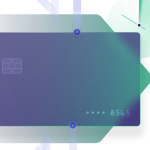Cryptocurrencies have long been criticized for their limited accessibility, primarily appealing to speculators and those well-versed in the crypto realm. However, proponents argue that the underlying decentralized technology has the potential to revolutionize society positively. Gnosis, a developer-favorite blockchain project, seeks to demonstrate the broader utility of Web3 with its latest innovation, the Gnosis Card.
The Gnosis Card is a groundbreaking Visa card that links self-custodial crypto wallets with traditional financial systems, allowing users to spend their digital assets anywhere Visa is accepted. Dr. Friederike Ernst, co-founder of Gnosis, emphasized that the launch of Gnosis Pay at EthCC in Paris aimed to extend beyond the crypto community and bring real-world utility to cryptocurrencies.
The implosion of FTX and the subsequent exposure of consumer cash misuse triggered a seismic shift in the crypto industry towards self-custodial wallets like MetaMask and Ledger. These wallets provide users with enhanced security and control over their assets. However, spending self-custodial assets in the real world has been challenging, mainly due to the prevalence of tokens with limited use cases.
The Card aims to bridge this gap between crypto and the real world. By enabling users to spend their crypto holdings through a Visa card, Gnosis opens up new possibilities for everyday transactions. The card will initially launch in the U.K. and EU, with plans for expansion into Brazil, Mexico, Singapore, and Hong Kong. Furthermore, Gnosis Pay will collaborate with MakerDAO to offer its USD-denominated stablecoin, Dai, as a credit card alternative in the U.S. by Q3.
Gnosis understands the importance of sustainable business models. The Card will come with a $1.18 cost, with the surplus being reinvested into engineering and compliance infrastructure. Additionally, Gnosis' blockchain ecosystem will grow as transaction fees generate revenue, while demand for GNO tokens is expected to increase with the card's usage.
The vision for Gnosis Card extends beyond just facilitating transactions; it aims to enable true peer-to-peer exchanges. However, Dr. Ernst acknowledges that achieving this goal requires time and ongoing technological evolution. As the industry evolves, peer-to-peer trust is expected to provide a better user experience and instill consumer confidence in the potential of cryptocurrencies.
To ensure seamless functionality, the Card involves extensive technology development, financial system connectivity, and compliance measures. Monerium, a regulated stablecoin provider in the European Union, powers the card by allowing users to link their wallets to an International Bank Account Number (IBAN). Payments from bank accounts to wallet-linked IBANs are minted as EURes on the Ethereum and Gnosis blockchains, which can then be spent through the Visa card.
Gnosis Pay, a suite of developer tools, allows crypto wallets to generate Gnosis Cards for users without the need to develop complex online payment infrastructure. This opens up opportunities for other wallets, such as MetaMask, to issue their own cards using Gnosis Pay APIs and tools. The collaboration with Fractal aids in the KYC process, ensuring that data privacy rules are met while maintaining compliance.
























